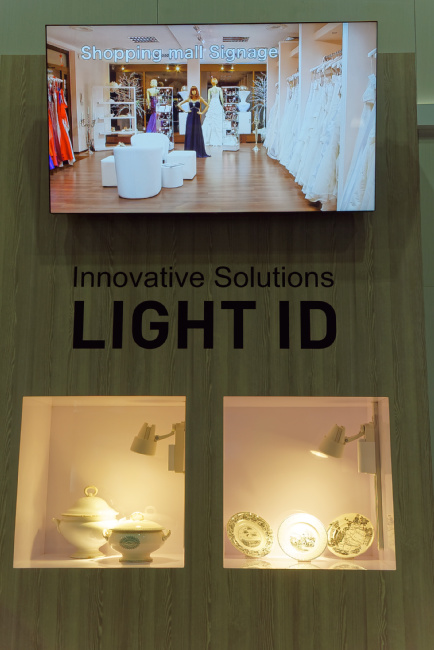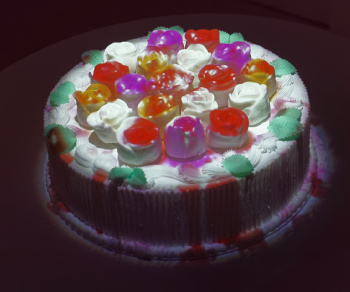Panasonic had two booths at the show, one devoted to mobile phones and the other to A/V solutions. We stopped by the mobile phone booth first.
The mobile phones for Panasonic are now developed in India with R&D in that country from 2013 onwards. It started to re-launch in the Middle East and Africa in September and is rolling out in different countries including the UAE, Saudi Arabia, South Africa and Egypt by the end of the year.
There is a range of phones from the entry (T Series)/mid segment (P Series) to the premium end which is promoted under the Eluga brand. The Eluga brand was promoted in Europe in 2012, but failed to make the hoped-for impact and was withdrawn from the market later in the same year.
One of the features of the phones is an interface which can be used one-handed – “useful when you are using your phone and driving”, we were told – hmmm… a sales pitch that is not likely to go down well in Europe! The phone also uses a “double tap” to wake up and can take a “blink selfie” – triggered by the person in the camera’s view blinking. The phone can also be used either way up – a feature we remember from the 2012 European launch.
Main Both Highlights Systems
We have noted that competitors often see Panasonic as a device company, whereas the firm has a well established systems and solutions business. For example, display vendors are sometimes nervous of the number of displays in our market research results and say that “we do not see the brand in the market”, but many displays are supplied for projects that the company is running completely, so the tender for displays alone may not go outside the firm. At Gitex, Panasonic had a number of demonstrations of different systems technologies.
There were a number of projectors that were announced at Infocomm including the PT-RQ13K and PT-RZ12K.( Panasonic Shows Laser Phosphor Projector and Announces 4K Projector) The company highlighted to us the range of its laser phosphor projectors which now are available from 3,000 Ansi lumens.
Our attention was drawn by the Light ID technology that the company was showing. This technology is related to the concept of Li-Fi – that is to say, data transmission by modulating the light from and LED. As well as spotlights and “base lights” that products can sit on, the firm has LCDs where the LED backlight is modulated. We have previously seen this concept demonstrated by Samsung, but not for some time.

The idea is that a display can give out an id – somewhat like the radio signal of a beacon – that identifies the display that the camera in the user’s mobile device is looking at. Applications go from the idea of identifying objects and pictures being shown on a display at a museum to some in digital signage. Panasonic told us that it is working with in Japan to see if this kind of display can be used at the Tokyo Olympics. Displays might have travel information in Japanese, but travellers from other countries could point at the display and receive the information in their native language. Data rates are limited to around 128Kbps, so only a limited amount of data can be transmitted. We interviewed the company about the technology and you can see the video here.
Other applications on display included a make-up system using a mirror display that allows users to try different make up colours and concepts. The system was well implemented in the demonstration that we saw. The company had a projector set up to show a “virtual fish pool” for museums and an interactive floor was also on the stand.
There were a number of applications for the “Space Player”, a special DLP projector that looks like a track light (http://tinyurl.com/q53ctwu). One unit was showing how the beam could be split into three areas to track the interaction by consumers in retail stores. Other units were being shown adding colour and patterns to simple white products.
 The Panasonic Space Player was used to add colour to this white cake
The Panasonic Space Player was used to add colour to this white cake

